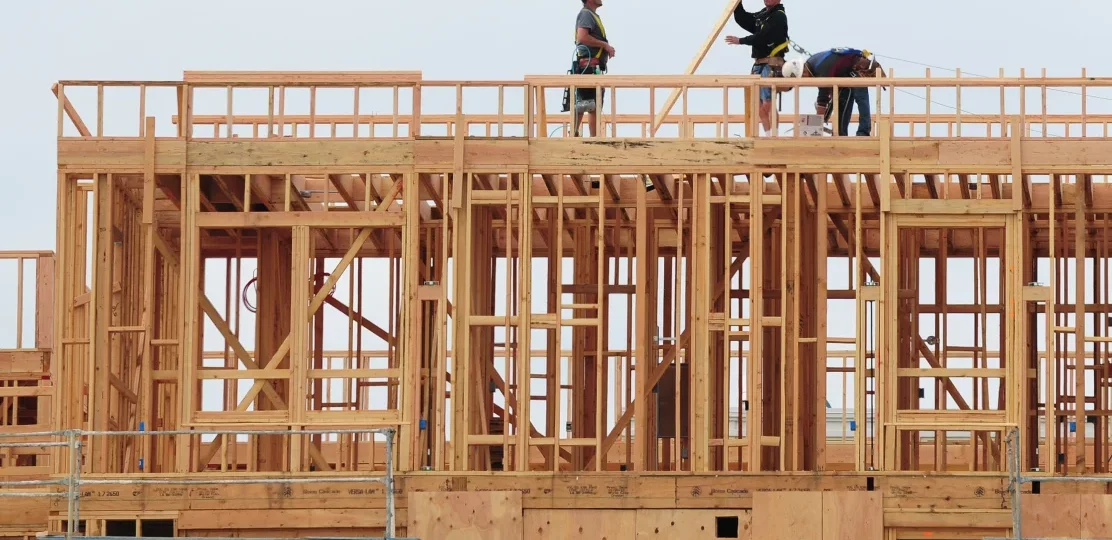
Bay Area apartment construction lags as rest of the country booms
While U.S. apartment construction is at a 50-year high, San Francisco could see a 58% drop in new apartments this year
From Miami to Seattle, apartment construction is booming as cities across the country rebound from the pandemic. But in the Bay Area, it’s a different story.
While U.S. apartment building is at a 50-year high, San Francisco is expected to see a 58% drop in the number of apartments completed this year, according to data from rental listing site RentCafe.
In San Jose, meanwhile, only half as many apartment units are set to come online as in 2021. And in Oakland, apartment construction is forecast to fall 80%.
The declines are being driven in part by nationwide challenges such as labor shortages, rising material prices and supply chain issues that other regions have been able to overcome so far this year.
But what’s making the situation worse in the Bay Area, housing experts and advocates say, are longstanding development roadblocks, including limited available land zoned for multifamily homes, burdensome environmental reviews, and drawn-out permitting and approval processes – which neighbors often exploit to pressure officials to delay or block new apartment buildings.
That’s all working to inflate the region’s already astronomical building costs, in turn discouraging construction despite the expensive rents developers can charge for new apartments in the Bay Area.
“When you add all of those factors together, it has really seized up the pipeline,” said Michael Lane, state policy director with Bay Area think tank SPUR. “The economics simply don’t work.”
Last year, the Bay Area saw apartment construction bounce back from COVID-19 shutdowns in 2020, led by a surge in new developments in Oakland and downtown San Jose. But as construction has slowed this year – even while some high-profile projects continue to break ground – the region has fallen far behind many of the country’s population centers when it comes to apartment building.
The entire San Francisco–Oakland–Hayward metro area is on track to complete around 7,400 apartments this year, a 26% drop from 2021, and less than half as many units expected for similarly sized metros such as Seattle and Phoenix, which are each forecast to deliver over 15,000 units, according to RentCafe. The San Jose-Sunnyvale-Santa Clara metro area’s 3,000-unit pipeline is down 50% from last year, and is just a third the size as that of the smaller Nashville metro.
To jumpstart construction and alleviate a deepening housing shortage across the state, California lawmakers earlier this month pushed through two bills making it easier to redevelop underused shopping malls, office buildings and parking lots into new apartments and townhomes. Supporters say the bills, which are expected to be signed into law by Gov. Gavin Newsom, could help bring down housing costs by potentially creating hundreds of thousands of new market-rate and affordable homes throughout the Bay Area.
Doug Ressler, manager of business intelligence at RentCare sister company Yardi Matrix, said the reforms should unlock new land for housing by streamlining the complicated rezoning process to allow dense residential development on commercial property.
“Urban cores like San Francisco, just like New York, have a finite amount of land, and nobody’s producing more land,” Ressler said.
At the same time, state officials are taking aim at San Francisco’s housing policies, launching an unprecedented investigation last month into why it takes longer there than anywhere else in California to approve much-needed new homes.
Unlike New York, Miami and other major cities, where development is booming as people return in droves after fleeing during the height of the pandemic, San Francisco and the rest of the Bay Area’s economic hubs – which have embraced remote work more than perhaps anywhere else in the country – have been slower to recover.
As a result, Bay Area rents, while gaining from their recent low point in 2020, have still yet to reach pre-pandemic levels in some cities, including San Francisco and Oakland.
Lane with SPUR said the uncertainty of just how many renters want to live in the region’s busy urban centers – especially given fears of a looming economic downturn – may also be keeping developers from pursuing new apartment projects in those areas.
“Do we come back to normal pre-pandemic or have we changed forever?” Lane said. “It’s probably some mixture of both but it will take a long time to become clear on that.”
Full article by Ethan Varian: https://www.mercurynews.com/2022/09/12/bay-area-apartment-construction-lags-as-rest-of-the-country-booms/

